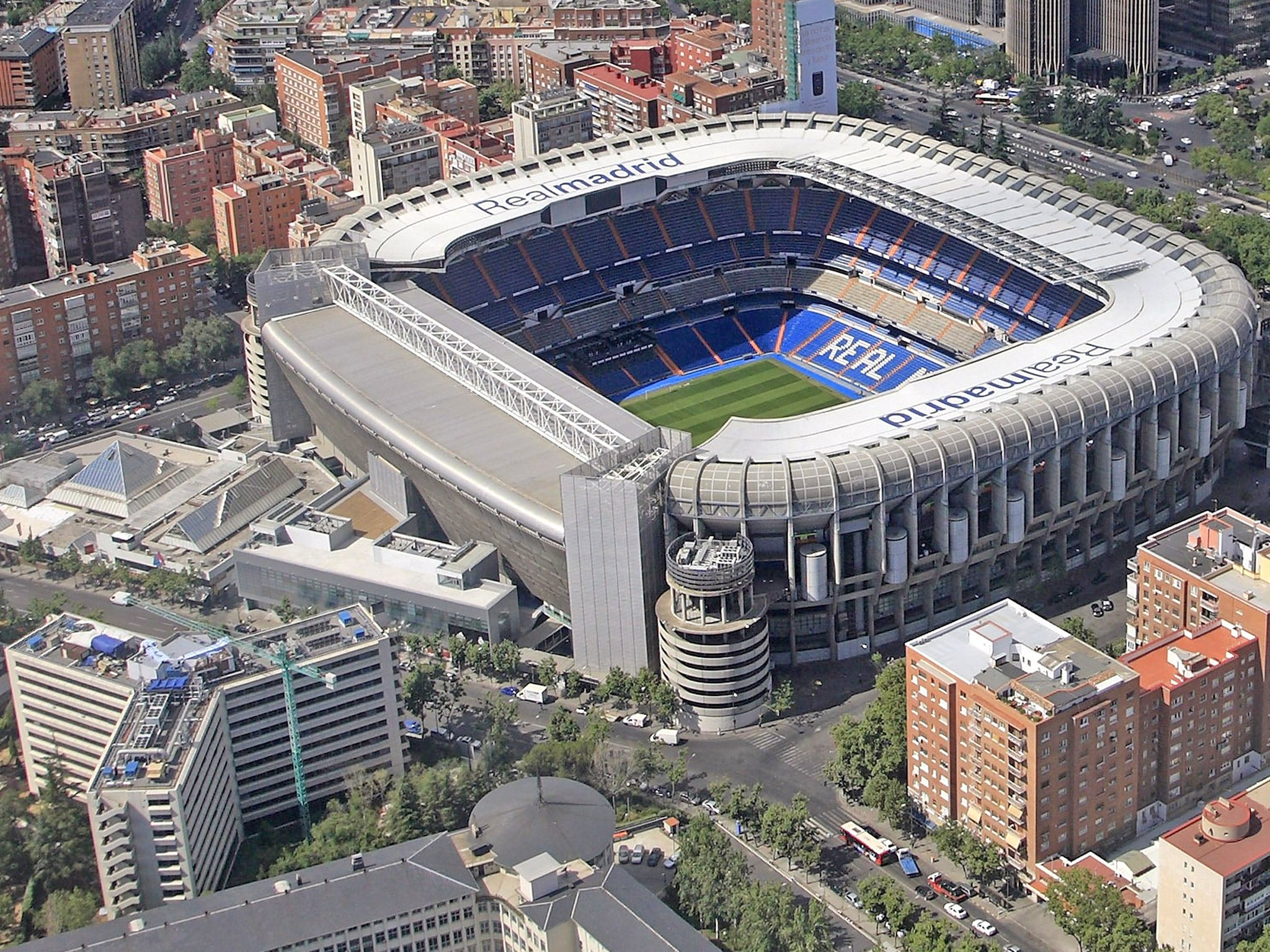State aid for Madrid's Santiago Bernabeu stadium? It's all about the Real estate
Spanish club are keen to develop their famous stadium and make it even more lucrative than ever. But do they always play fair?

The building of the Santiago Bernabeu stadium was begun before the end of the Second World War and, taking its name from the president who presided over the club's greatest years, has become one of the most famous sporting arenas in the world.
But at Real Madrid, they foresee a future where their stadium is even bigger, better and more lucrative than ever before.
The story of how Real came to be investigated by the European Commission after allegations of state aid goes to the heart of the club's ambitions. The new shopping mall and hotel complex, as well as the naming rights associated with the roof, are part of the plan to keep Real, with an annual revenue of €512m (£434), as the highest-earning club in the world.
Last year the Uefa president, Michel Platini, and the EC competition commissioner, Joaquin Almunia, issued a robust joint-statement condemning state aid for football clubs. In December 2011, the commission had begun investigating the allegation that Madrid City Council had overestimated its debt to the football club in order to enable the transfer of the land Real needed to build the new shopping mall, hotel and stadium roof.
Timeline of events around the Bernabeu
* In 1996, Madrid City Council agreed a deal to pay €27m for part (30,000 square metres) of Ciudad Deportiva, Real Madrid's training ground in the city. The city council intended to build a basketball arena on the site, although that never took place. Four years later, in 2000, part of the training ground retained by the club was redeveloped to build the four skyscrapers that funded much of the original galacticos team of the previous decade.
* The deal in 1998 between Real and MCC meant that the latter agreed to pay half the sum in cash, €13.5m, and half in property assets, primarily in the Julian Camarillo area of the city, which were sold on by Real for the sum of €13m.
* As part of the 1998 agreement Real also received 70,000 square metres in Las Tablas district, in the north of the city, valued at €421,000. At the time of the 1998 agreement this piece of land was only regarded as 1.5 per cent of the total consideration.
* In 2011, MCC discovered it was "legally impossible" for it to transfer Las Tablas to the football club because the land was public. In fact, the city council did not even have ownership of the land until July 2000, two years after the council agreed to it being part of the original €27m deal.
* In order to remedy the situation, the city council took back Las Tablas land and revalued the property to calculate the compensation payable to the club. From a value of €421,000 in 1998, it deemed the value in 2011 to be €22.7m, a 5,400 per cent rise.
* Using equivalent property values for the area in 2011, Las Tablas, which only had planning permission to be used for sporting purposes, would be valued at just more than €1m.
* In July 2011, in lieu of the €22.7m valuation, the club was given packets of public land in return for giving up any claim to Las Tablas. Some of that land was around the club's current Valdebebas training ground, some in the Carabanchel district of the city and an area around the Bernabeu, that they were previously renting from MCC.
* In addition, in July 2011, a €2.8m fine imposed on Real by MCC was also cancelled. That fine was outstanding from Real's failure to build a multi-storey car park by the stadium as part of an earlier agreement in 1991 when they developed the more modest Esquina shopping mall.
* When the agreement in July 2011 between MCC and Real was finally signed, including land transactions and cancellation of fines, the outstanding balance between the two parties was just €8 in Real's favour. The club agreed to waive the debt.
* In November 2011, Real agreed to transfer the land in the Carabanchel district, and the land upon which the Esquina mall was built, back to MCC in return for land adjacent to the Paseo de la Castellana where the new hotel and mall complex will be built.
* Under Spanish construction law, it is not simply a case that the club can build a roof on their stadium without planning permission. The club require building rights to do so. That was also covered by a €6.6m payment included in the November 2011 agreement with MCC. It has been estimated that naming rights for the stadium, including the prime advertising site of the Bernabeu roof could be worth as much as €50m annually.
* In December 2011, the European Commission began an investigation into allegations of illegal state aid against Real. It has a year to reach a decision but can extend that if it is still awaiting information from respondents.
* There have been delays to the Bernabeu project going ahead in recent months, with protests from local residents. However, the competition investigation would be a much more significant barrier. The club say that the construction of the mall and hotel complex will mean the creation of 2,300 new jobs.
* Real said: "The valuation of all the properties have increased due to the time lapse between the different valuation that in some cases exceeds 10 years, the degree of evolution of the urban development process and the evolution of property prices."
Subscribe to Independent Premium to bookmark this article
Want to bookmark your favourite articles and stories to read or reference later? Start your Independent Premium subscription today.

Join our commenting forum
Join thought-provoking conversations, follow other Independent readers and see their replies